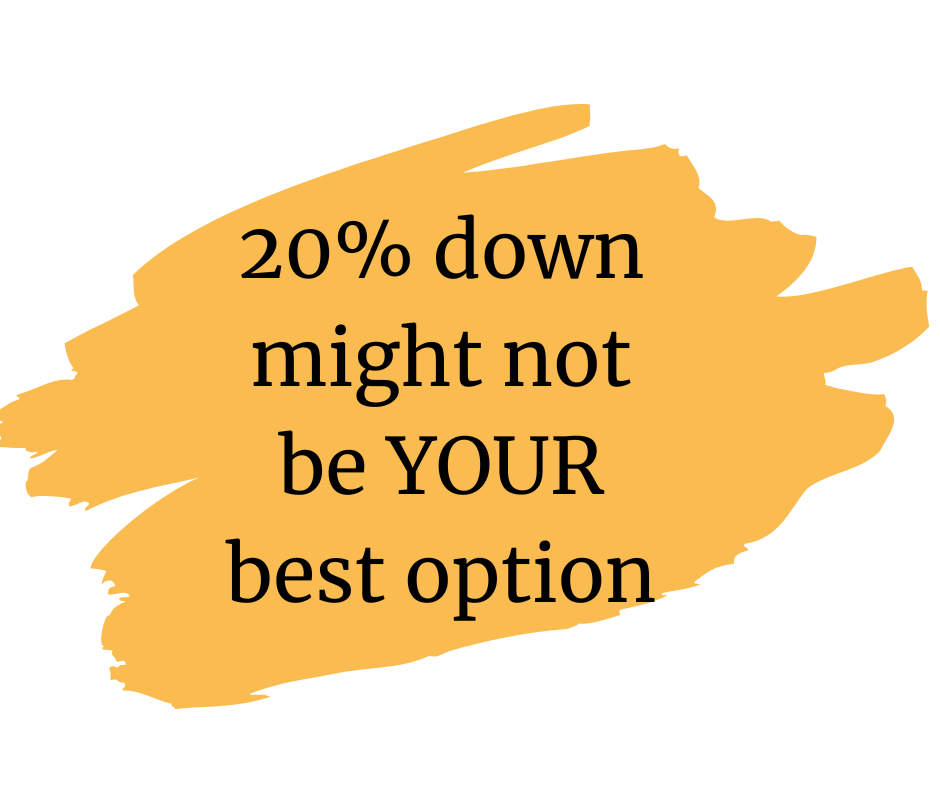Part of Libby’s secrets to buying your first home
I’m a rule follower, so is my husband. It’s how we are wired. It’s also why we put 20% down on our first home. It turns out, in our case that was a $50,000 mistake.

We knew that if we put less than 20% down, we would need to pay mortgage insurance (or something similar to mortgage insurance), and we would also pay more interest on the loan. We didn’t want to do that, it seemed like a fine for not doing the “right” thing.
I recall telling our agent that we were looking into the Federal Housing Administration’s loan program for our first home. She thought it was a bad idea because we were buying a fixer-upper, and the FHA program can be hard to use with rough properties. The FHA program is especially helpful for first-time buyers: they accept borrowers with lower credit scores, and have minimal down payment requirements (just 3.5%).
We looked into it anyway in case it might be more economical, and decided against it because the mortgage interest was much than on a conventional loan. Conversation closed, and onward we went with a 20% down conventional loan!
Putting down 20% can be a mistake
We didn’t realize it until years later, but dang did we make a mistake! Though we were immensely proud of ourselves for toughing it out and saving $50,000 to make a down payment, we really didn’t need to. What we thought was the “right” thing blinded us to searching for the best solution.
And, because our loan officer and real estate agent didn’t nudge us, we didn’t know there we other options.
Our first home was outside of a small agricultural town. It was a very rural location…town itself was only 6,000 people.
Had we kept looking we would have discovered the US Department of Agriculture mortgage. A USDA loan is an incredible product. USDA loans have $0.00 down payment, and the interest on the loan is often lower than with conventional mortgages.
In order words: we could have kept our money invested. Yes, our monthly payment would have been higher, but we would have been growing wealth via investments AND growing wealth in our home. The home more-than doubled in value while we owned it, and investments grew about 2.7x.
As it happened, we completely wiped out our savings. We didn’t even have enough left over to buy paint to repaint the interior ourselves. It needed it…and about 100 other things.
USDA loans are still a wonderful option (as are Colorado and regional first-time buyer programs, which can sometimes be combined with USDA loans). Income limits vary by County. The 2022 income limit for a single person using a USDA loan is $129,400 in Boulder County (great for Lyons!).
What is right for you?
I don’t know that answer! I expect you don’t know either…and that’s OK! The important part is to be open to conversations. After our initial discovery call (you can schedule yours here) I will introduce you to a lender to help you consider what make senses for your long term goals.
If you don’t have 20% saved, you can still buy your first home! Putting 20% down can be a wonderful decision if you have it, but the important thing is that you explore all of the options available to you and make the right decision for your circumstances.
Hi, there!
I'm Libby Earthman. I specialize in proactively protecting my clients as they buy and sell homes on Colorado's northern Front Range. I want you to know HOW to make well-reasoned real estate decisions, and I proactively protect your interests during the transaction.
Let's Chat!
Contact
(720) 487-3126
402 Main Street
Longmont, CO 80501
libby@libbyearthman.com